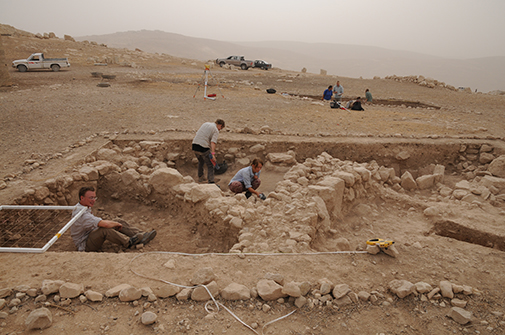What is the Murayghat field school?
The Murayghat field school is a field school under the auspices of the University of Copenhagen. Students of Near Eastern archaeology from the University of Copenhagen participate in the project in order to gain knowledge and first-hand experience with fieldwork and methods of excavation and survey. However, the field school is open to students of archaeology from other universities and to anyone else interested in archaeology.
As a participant at the Murayghat field school you will have the possibility to learn methods of excavation, survey and documentation according to your current skill level, be that as a beginner or as a more experienced field school participant. The experience also includes practical processing of finds found in the field. Lastly, the project will provide participants the opportunity to work with different in-house documentation methods, such as illustration and photography. During the field school you will meet archaeologists, students and volunteers in an international environment and experience the culture of Jordan.

Students and staff working in the excavation trenches
The aim of the project is to investigate the central hill through survey and excavation to document and study the site, which is an important part of the archaeological heritage of Jordan. The study of Murayghat is approached with a particular consideration to landscape archaeology and the archaeological study of rituals. One aim of the project is to identify the nature of the occupation at the site and to date the different archaeological remains associated with the site. Another aim is to investigate the surrounding hills by survey, documenting the dolmens and any other features present in the landscape.
